Third year BA Conservation: Stone, Wood & Decorative Surfaces student, Ethan Gallesio, carried out an observational internship at the paleochristian catacombs of Villagrazia di Carini, the largest catacombs in western Sicily, dating from 4th to 8th century A.D.
In his own words, Ethan describes the conservation work undertaken in the catacombs:
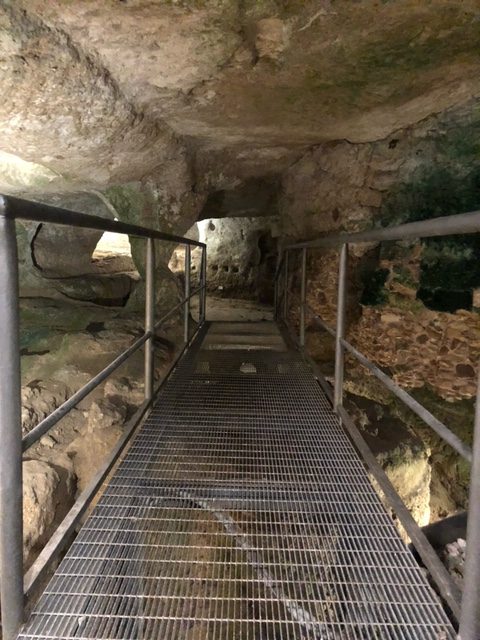
Entryway to the catacombs
My internship focused for my part on the painted frescoes present in the galleries and cubicles of the catacombs. Most of the frescoes illustrated passages from the Old and New Testament, illustration made by craftsmen with the exception of one fresco representing Helena, mother of Constantine the Great made with an artistic approach (use of other pigment and illustration techniques not present on the rest of the frescoes).
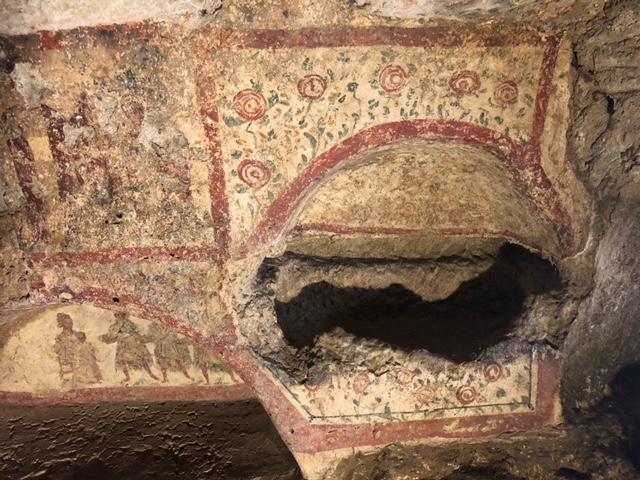 First fresco made for a tomb of a children (Mechanically cleaned)
First fresco made for a tomb of a children (Mechanically cleaned)
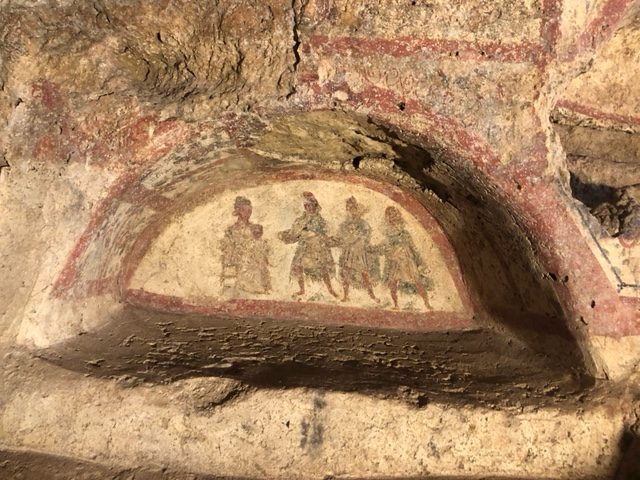 Second fresco painted arc for another small tomb representing Maria and the child with the three wise kings (laser cleaned)
Second fresco painted arc for another small tomb representing Maria and the child with the three wise kings (laser cleaned)
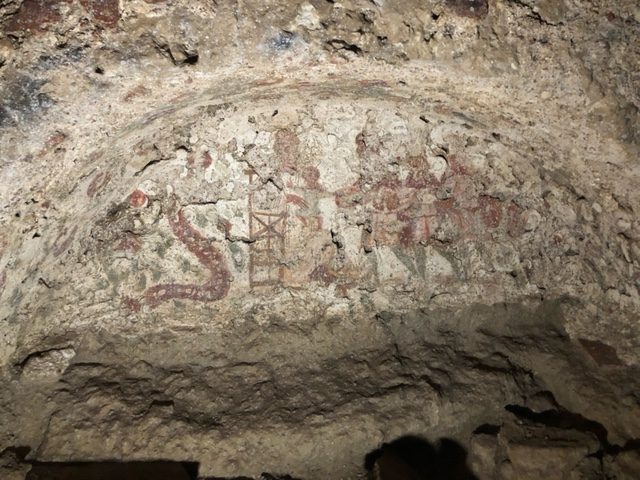 Third fresco representing Maria and the child seated (Mechanically cleaned)
Third fresco representing Maria and the child seated (Mechanically cleaned)
The analysis carried out on these frescoes made possible to identify pigments such as red iron oxide, yellow ochre, brown manganese as well as cobalt blue present only in the representation of Helena being a very expensive material at the time.
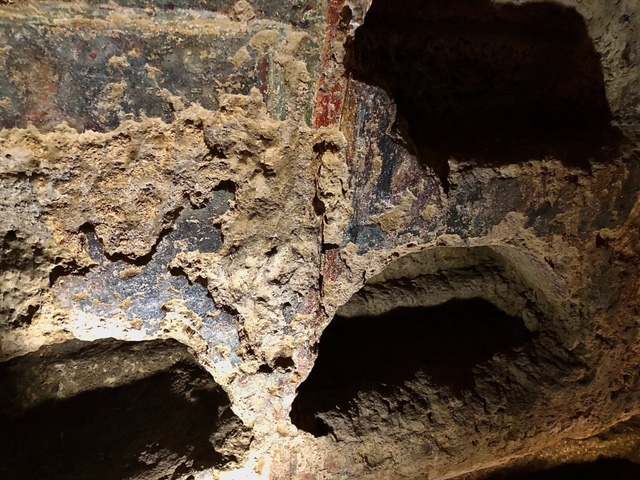 Representation of Helena (face on the left) with a blue background painted with cobalt pigments (Mechanically cleaned)
Representation of Helena (face on the left) with a blue background painted with cobalt pigments (Mechanically cleaned)
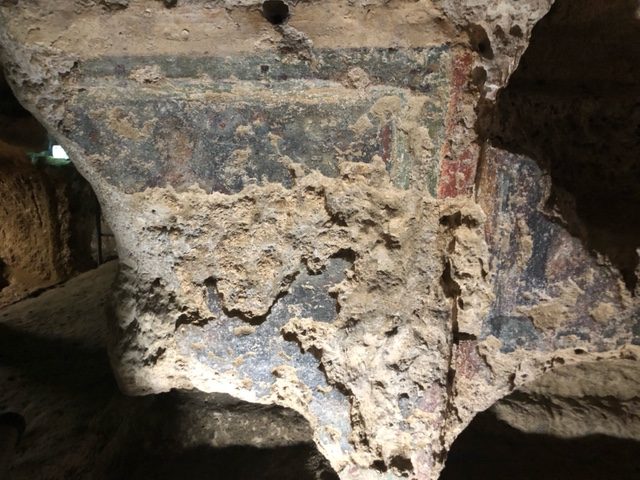 Detail of the fresco depicting Helena
Detail of the fresco depicting Helena
The frescoes being initially covered with sediment, the curators cleaned them with scalpels, cotton wool and deionizer water. Certain frescoes were cleaned using laser cleaning. A few years after salt crystals and a patina of limestone appeared on the surface making the frescoes less visible. The dampness of the catacombs causes erosion, and an aeration system has been placed to diminish those effects.
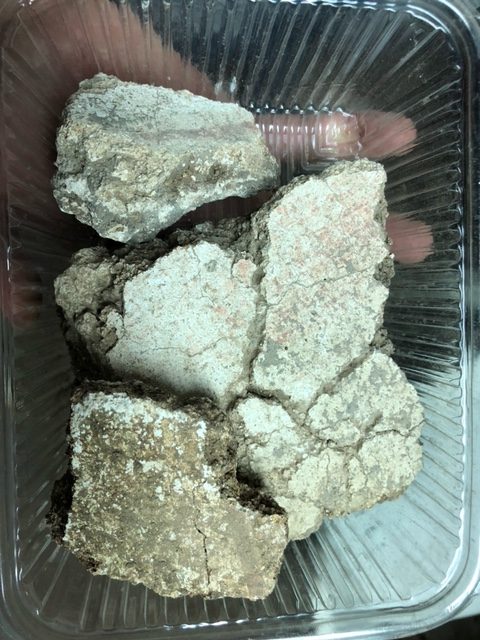
Painted fragment with chalk and iron oxide residue


